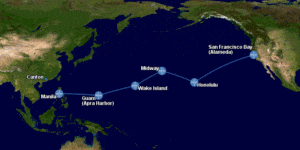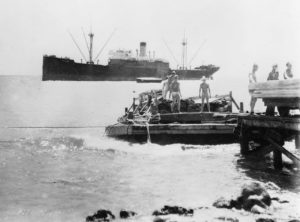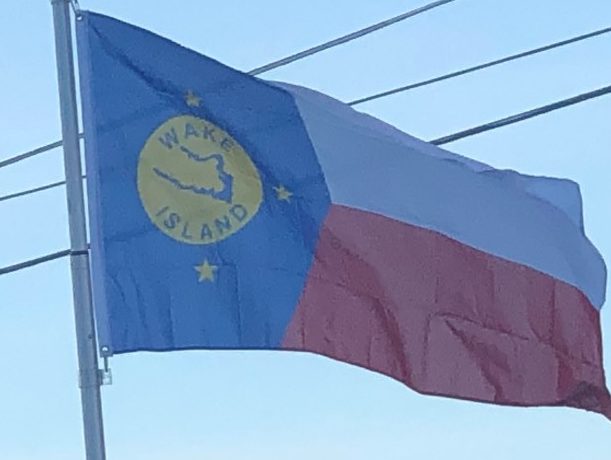
Meanwhile, U.S. Navy military planners and the State Department were increasingly alarmed by the Empire of Japan’s expansionist attitude and growing belligerence in the Western Pacific. Following World War I, the Council of the League of Nations had granted the South Pacific Mandate to Japan which included the already Japanese-held Micronesia islands north of the equator that were part of the former colony of German New Guinea of the German Empire; these include the modern nation/states of Palau, Federated States of Micronesia, Northern Mariana Islands and Marshall Islands. In the 1920s and 1930s, Japan restricted access to its mandated territory and began to develop harbors and airfields throughout Micronesia in defiance of the Washington Naval Treaty of 1922, which prohibited both the United States and Japan from expanding military fortifications in the Pacific islands. Now with Trippe’s planned Pan American Airways aviation route passing through Wake and Midway, the U.S. Navy and the State Department saw an opportunity to project American air power across the Pacific under the guise of a commercial aviation enterprise. On October 3, 1934, Trippe wrote to the Secretary of the Navy, requesting a five-year lease on Wake Island with an option for four renewals. Given the potential military value of PAA’s base development, on November 13, Chief of Naval Operations Admiral William H. Standley ordered a survey of Wake by USS Nitro and on December 29 President Franklin D. Roosevelt issued Executive Order 6935, which placed Wake Island and also Johnston, Sand Island at Midway and Kingman Reef under the control of the Department of the Navy. In an attempt to disguise the Navy’s military intentions, Rear Admiral Harry E. Yarnell then designated Wake Island as a bird sanctuary.
USS Nitro arrived at Wake Island on March 8, 1935, and conducted a two-day ground, marine and aerial survey, providing the Navy with strategic observations and complete photographic coverage of the atoll. Four days later, on March 12, Secretary of the Navy Claude A. Swanson formally granted Pan American Airways permission to construct facilities at Wake Island.
To construct bases in the Pacific, Pan American Airways (PAA) chartered the 6,700-ton freighter SS North Haven, which arrived at Wake Island on May 9, 1935, with construction workers and the necessary materials and equipment to start to build Pan American facilities and to clear the lagoon for a flying boat landing area.

The atoll’s encircling coral reef prevented the ship from entering and anchoring in the shallow lagoon itself. The only suitable location for ferrying supplies and workers ashore was at nearby Wilkes Island; however, the chief engineer of the expedition, Charles R. Russell, determined that Wilkes was too low and at times flooded and that Peale Island was the best site for the Pan American facilities. To offload the ship, cargo was lightered (barged) from ship to shore, carried across Wilkes and then transferred to another barge and towed across the lagoon to Peale Island. By inspiration, someone had earlier loaded railroad track rails onto North Haven, so the men built a narrow-gauge railway to make it easier to haul the supplies across Wilkes to the lagoon. On June 12, North Haven departed for Guam, leaving behind various PAA technicians and a construction crew.
